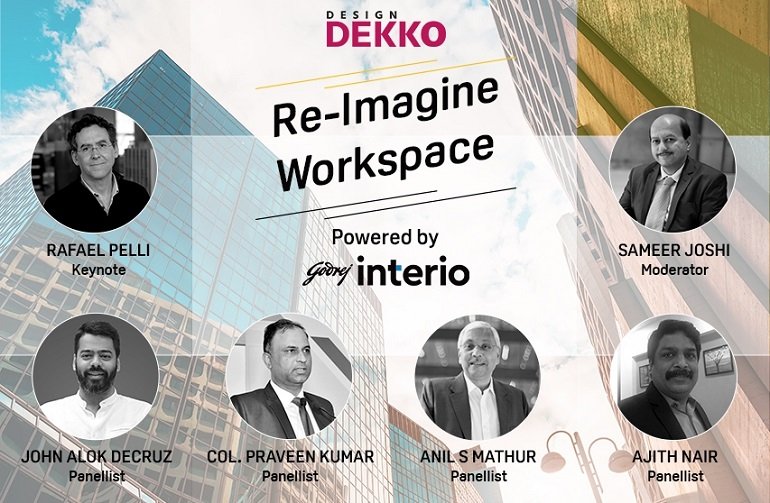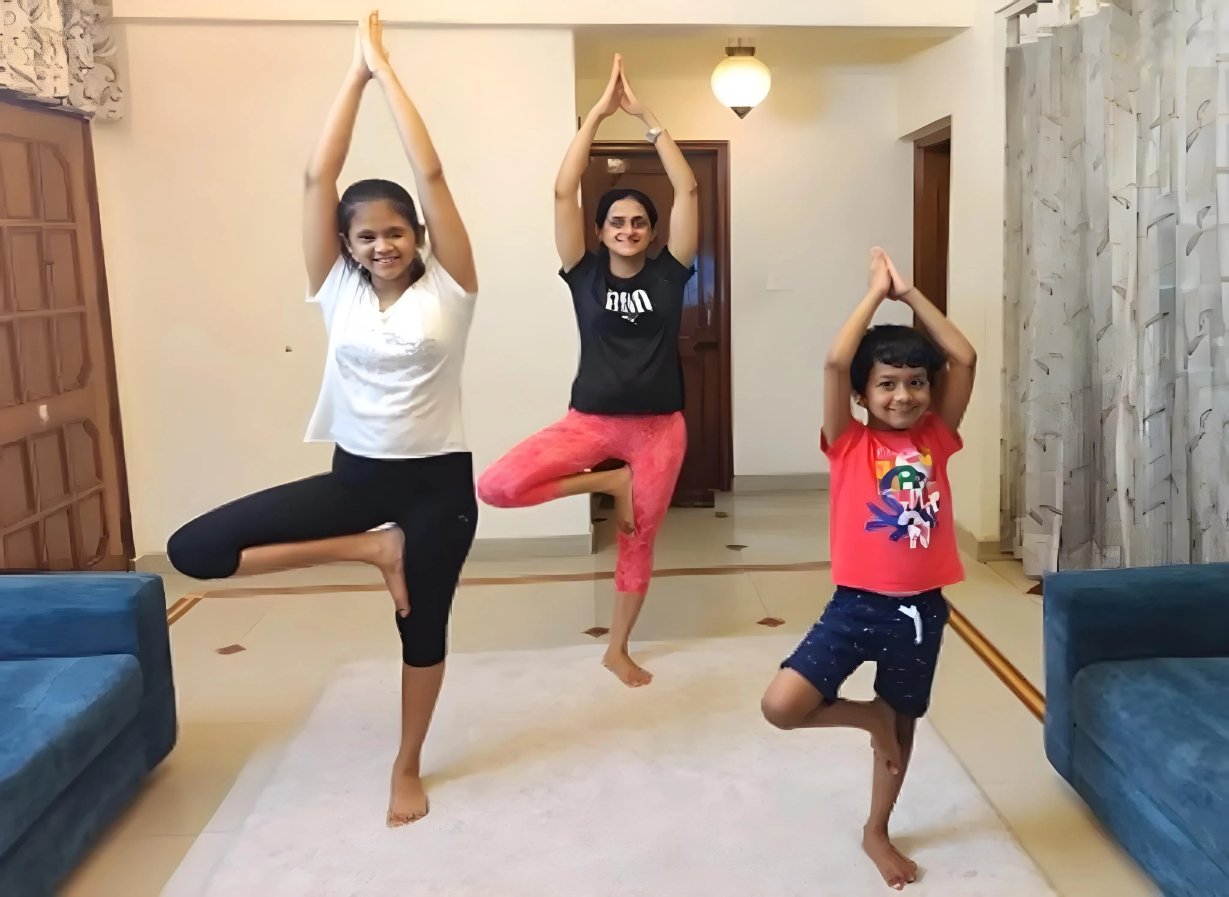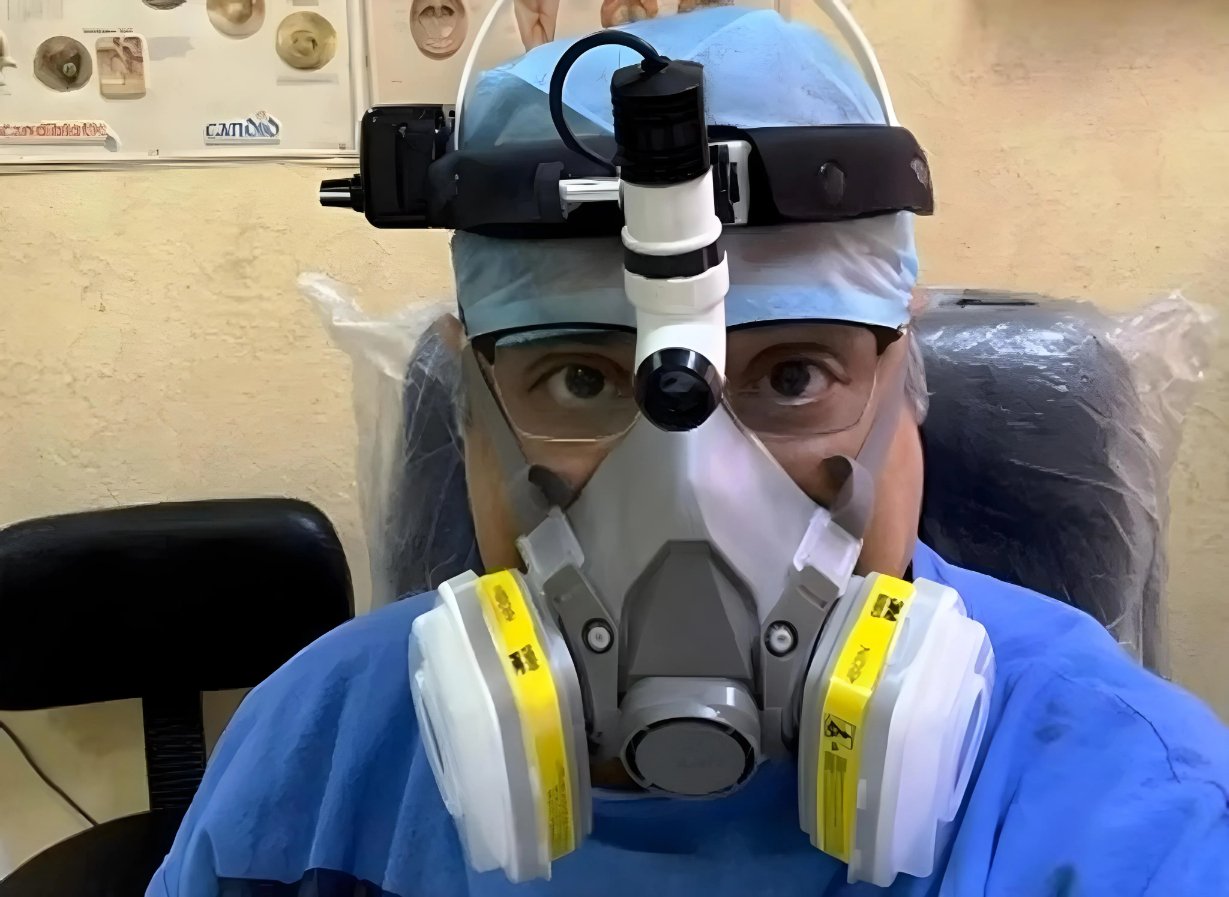A world renowned architect has suggested that the workplaces of the future will need to be super agile and flexible, science based and health guided. Delivering the keynote address in a webinar titled “Re-imagine Workspaceâ€, organised by India’s leading furniture solutions brand Godrej Interio, on Friday, Rafael Pelli, Design Partner, New York-based Pelli Clarke Pelli Architects, said though the workplace as we know today will never be the same again in the aftermath of the Covid-19 pandemic, we should be careful not to over-react to the prevailing situation in the short term and damage the buildings for long term use.
The webinar was first of a series launched in collaboration with Design Dekko, the Godrej Group owned media platform for architecture and design professionals. The session was moderated by Sameer Joshi, Head of Marketing (B2B) & Workspace Research, Godrej Interio.

Delivering The Keynote Address: World Renowned Architect Rafael Pelli
Pelli was of the view that the ongoing discussions on design aspects, necessitated by the pandemic, have to be focussed differently on what we need to do in the short term and in the long term.
In the short term, we have to see how we can manage our way during the time there is no vaccine and no effective treatments available to fight the pandemic and how we can adapt our workplaces to the changed environment. And in the long term, we have to deliberate on what considerations we have to keep in mind in environments which could be different even when we would have found a solution to this immediate problem, he emphasised.
Explaining that in the short term, we are clearly facing a very abrupt and profound change in our workplace, he shared, “I am working in Connecticut. Our New York office has been functioning fully remotely. Only recently we have started letting a few people in. This is a worldwide phenomenon with a lot of people working remotely.”
Stressing that intrinsic to modern knowledge-based workplaces, there are clear disadvantages and advantages, he elaborated that the disadvantages pertain to very dense, open plan environment with a lot of people in close contact. “This is not a good condition for Covid-19 times. It is a good condition for normal work collaboration.
Advertisement

“There are also buildings that are much better sealed than they were historically. So we can keep the inside areas cool, filtered and humidified, but it also means that we are not allowing enough mixing of air, dispersing and defusing it to address the health issues of the air we breathe. In the last couple of months there have been issues with the surfaces we touch. In the end all these are issues for consideration in designing future workplaces.”
However, he cautioned that we have to be careful not to overreact to the situation in the short term so that we do not cause damage to the buildings for long term use.
On the positive side, he said modern workplaces offer a huge advantage in terms of infrastructure that supports remote working as never available before. And there is a large diversity of spaces available like atrium space, outside turf, cafeteria space and other joint spaces. In modern workplaces we try to create an environment with a small amount of personal space and a large amount of shared space. In times like this, these can be used flexibly and to our advantage, he added.
Pelli said in the long term, clients are clearly feeling the need for having a central office to maintain a collaborative work environment that has intensity, and at the same time to enable greater remote working, have a slew of satellite workplaces and more people working from home. So while we do all this, there can be no compromise on the basic the bsic requirements of workplaces – they need to be enabling, inviting and rich for people’s use.

Moderator And Panellists
One of the panellists, John Alok Decruz, Director – Projects, of design firm Morphogenesis, while agreeing with Pelli’s concept of super agile and flexible workplaces, emphasised that the agility needs to transcend the space from outdoors to indoors.
Giving the example of his own company while stressing the need to constantly make efforts to reduce densification of cities and large offices, Decruz said using the hub and spoke model it had split a large central office of the company housing 200 employees to four smaller studies of about 50 people each to ensure that employees work from workplaces closer to their homes and hence their daily commute gets crunched.
Giving another example of a typical 1.5 million square feet commercial building spread over 12 floors and housing around 15,000-20,000 employees, he said the entrance and exit of such buildings come under heavy load. To reduce this load the building could be divided into four sections of three floors each and separate entrances and exits as also vertical transportation like elevators could be created for each to lessen congestion.
Another concept being tried out is 100% dependence on natural daylight for purpose of lighting a commercial building during daytime, while at the same time allowing entry of natural UV rays to destroy the viruses, but taking equal care to cut out glare coming on the screens.
Col. Praveen Kumar, Head – IPD (Infrastructure Planning & Development), Tata Consultancy Services, emphasised that agile workplaces are the future for all spheres of activity going forward since more than speed the world agile represents a way of collaborative working, which is essential for optimum results in any organisation.
Organisational culture, employee engagement and experience expert Ajith Nair pointed out that what everyone has been grappling with during the pandemic is a sense of anxiety, for not being sure of what lies ahead.
“When we talk about workplace safety we are not just talking about physical safety, which entails sanitisation, maintaining social distances, etc, but very important part of the whole conversation is also psychological safety. That is what we need to bring into play and HR needs to champion that. Essentially what we are talking about is an acronym called HOPE with H standing for health, O for Optimism, P for purpose and E for enablement. That is what an employee needs in these times of uncertainty,” he added.
Pointing out that there have been a lot of kneejerk reactions from organisations in the form of communications which are not necessarily aligned with an employee’s idea of what the organisation stands for, Nair said this is causing a lot of dissonance in the minds of the employees and adding to their anxiety. So, organisations need to align their actions with their purpose to give that sense of psychological safety to employees, he stressed.
Nair noted with satisfaction that increasingly companies are becoming more communicative with their employees. Various teams within organisations are seen to be meeting more often. What started as a crisis management has stuck on. This trend needs to sustain as it is beneficial for both the organisation and employees because resilience building happens when collaboration happens.
Anil S Mathur, Chief Operating Officer, Godrej Interio, felt that work from home concept was here to stay and expressed confidence that productivity will not be adversely impacted on account of this. What is needed is to train employees to be more digitally savvy and facilitate them in adjusting to the new work environment. He saw a bright future for multi-tiered approach to working with work from home, satellite offices and a central office.
He said a recent survey conducted by his company had brought out that 90% of the employees preferred a mix of work from home and work from office. Being social animals human beings need to feel the spirit of camaraderie with colleagues.
Revealing that design teams of the company were already working on multi-functional and multi-utility furniture and equipment to make optimum use of space and ensure comfortable experience of working while sitting on a bed, dining table, sofa, etc., he offered to collaborate with design firms towards this end.
LifeInChandigarh.com by APR Media House is an enjoyable digital reading startup, which keeps you abreast of the latest meaningful happenings of interest to large sections of folks in Chandigarh tricity, and expats from the region. It has been promoted by a public spirited senior journalist and media consultant with a view to encourage good quality and healthy journalism, a dire need of the times.
To keep in touch, drop an email or call :
kochhar.apr@gmail.com
9815617676




